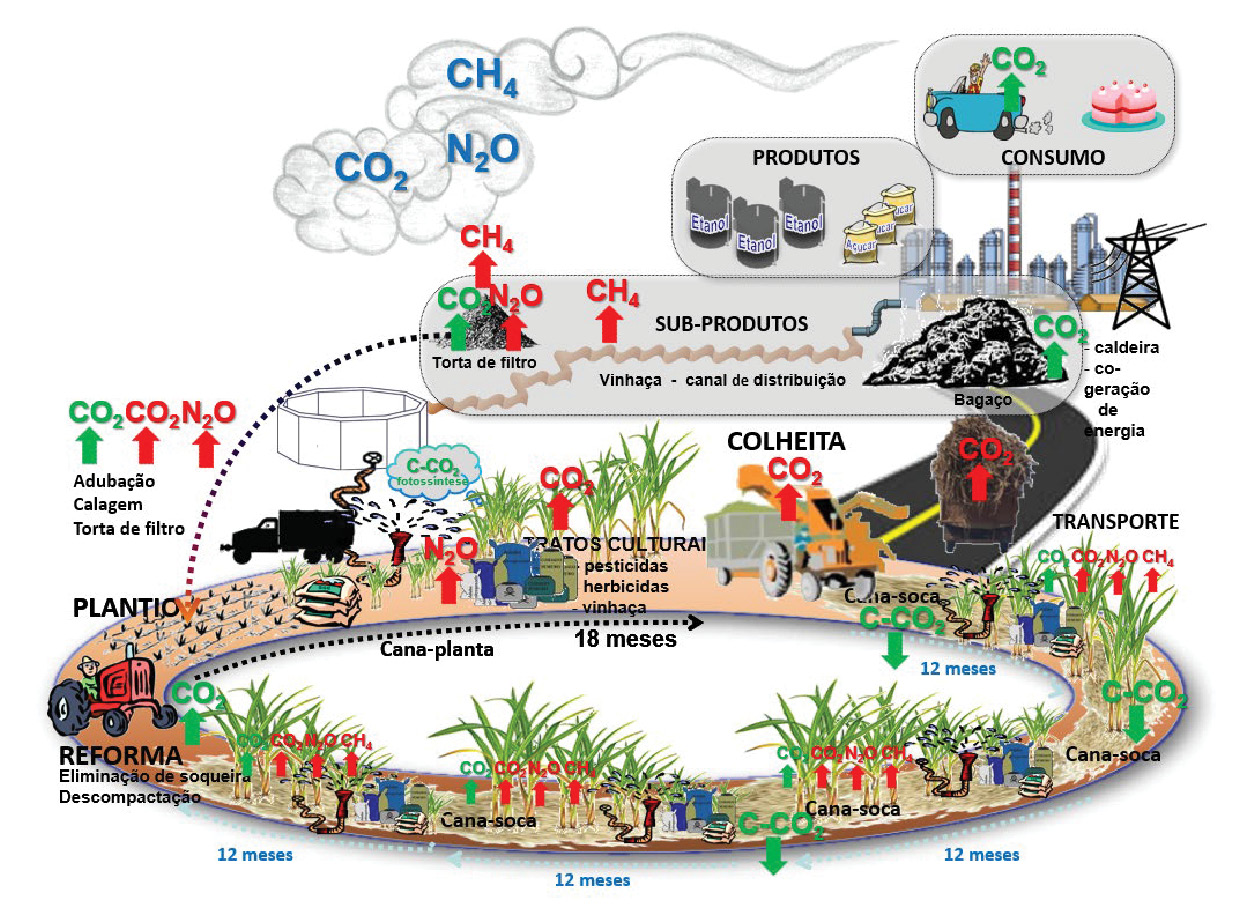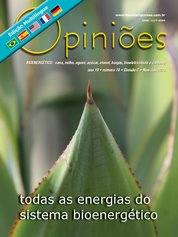Carlos Eduardo Pellegrino Cerri
Professor de Ciência do Solo da Esalq-USP
OpAA74
Cana-de-açúcar como opção de mitigação das mudanças climáticas globais
A cana-de-açúcar apresenta comprovado potencial para produzir altos rendimentos de alimentos (açúcar e subprodutos) e bioenergia (etanol de primeira e segunda geração e bioeletricidade), provendo o fornecimento de combustíveis gasosos, líquidos e sólidos.
Portanto, o bioetanol derivado da cana-de-açúcar é uma alternativa de energia renovável bem estabelecida para substituição de combustíveis fósseis, reconhecida pelas baixas emissões de carbono em seu ciclo de vida, que, se bem realizado, pode evitar impactos negativos sobre segurança alimentar e biodiversidade. As projeções globais indicam que a produção de etanol se expandirá de cerca de 100 bilhões de litros para quase 134,5 bilhões de litros em 2028. Espera-se que 2/3 desse aumento tenham origem na
Portanto, o bioetanol derivado da cana-de-açúcar é uma alternativa de energia renovável bem estabelecida para substituição de combustíveis fósseis, reconhecida pelas baixas emissões de carbono em seu ciclo de vida, que, se bem realizado, pode evitar impactos negativos sobre segurança alimentar e biodiversidade. As projeções globais indicam que a produção de etanol se expandirá de cerca de 100 bilhões de litros para quase 134,5 bilhões de litros em 2028. Espera-se que 2/3 desse aumento tenham origem na
cana-de-açúcar brasileira.
Nesse contexto, a crescente demanda por produção de bioenergia, impulsionada pela política setorial no Brasil (por exemplo, programa RenovaBio) e compromissos internacionais, para alcançar as Contribuições Nacionalmente Determinadas (NDC), anunciadas no Acordo de Paris, torna a cana-de-açúcar uma matéria-prima importante para a produção de bioenergia de forma mais sustentável.
Há, atualmente, intensa discussão envolvendo instituições de ensino e pesquisa e diversos agentes da complexa cadeia sucroenergética cobrindo um conjunto multitemático de tópicos, incluindo sequestro de carbono no solo, emissões de gases do efeito estufa, biodiversidade do solo, manejo dos resíduos culturais, reciclagem de nutrientes de subprodutos da cadeia sucroenergética, racionalização da aplicação de fertilizantes, manejo de pragas, mecanização, soluções de engenharia, desempenho industrial, dentre outros aspectos.
Por ser uma cultura semiperene, a cana-de-açúcar é altamente eficiente para converter CO2 atmosférico em compostos orgânicos. Estudos indicam que, anualmente, cada hectare de cana-de-açúcar retira da atmosfera cerca de 60 toneladas de CO2. Portanto, em média, cerca de 600 Gt de CO2 são removidos anualmente da atmosfera pelas usinas de cana-de-açúcar, nos 10 milhões de ha no Brasil.
Do campo à indústria, a cadeia produtiva da cana-de-açúcar é complexa, mas também versátil, permitindo produzir açúcar, biocombustível avançado (etanol e querosene de aviação), bioeletricidade, biometano, biopolímeros, biocarvão, entre outros produtos.
Todos os processos e produtos associados à cana-de-açúcar tornam-se oportunidades para sequestrar carbono e reduzir emissões de GEE, conforme ilustrado na figura em destaque. A redução das emissões de gases de efeito estufa pela substituição de combustíveis fósseis depende de como os biocombustíveis são produzidos e de como as emissões são calculadas. Métodos científicos para avaliar a produção, distribuição, venda e consumo são essenciais.
As políticas públicas e setoriais por trás dos certificados de descarbonização podem incentivar agricultores e tomadores de decisão a buscar soluções mais eficientes e econômicas para diminuir ainda mais as emissões e melhorar a sustentabilidade. O etanol de cana-de-açúcar é uma excelente alternativa para o etanol produzido não apenas de primeira geração, mas também de segunda geração, recentemente desenvolvido, a partir de processos de hidrólise de celulose.
As políticas públicas e setoriais por trás dos certificados de descarbonização podem incentivar agricultores e tomadores de decisão a buscar soluções mais eficientes e econômicas para diminuir ainda mais as emissões e melhorar a sustentabilidade. O etanol de cana-de-açúcar é uma excelente alternativa para o etanol produzido não apenas de primeira geração, mas também de segunda geração, recentemente desenvolvido, a partir de processos de hidrólise de celulose.
Finalmente, a bioenergia derivada da cana-de-açúcar é uma opção sustentável para enfrentar as mudanças climáticas, fornecendo outros serviços ecossistêmicos importantes e promovendo o desenvolvimento socioeconômico, especialmente melhorando a qualidade do solo e sua capacidade de sequestrar carbono.
As partes interessadas do setor sucroenergético, incluindo cientistas, agricultores e indústrias, estão verdadeiramente comprometidos em tornar a produção de cana-de-açúcar em larga escala no Brasil parte da solução para mitigar o clima por meio do sequestro de carbono do solo, biocombustível, bioeletricidade e produção de bioprodutos, tecnologias industriais de emissões negativas, reciclagem de resíduos industriais e políticas setoriais que recompensam os agricultores por evitarem as emissões de CO2.





